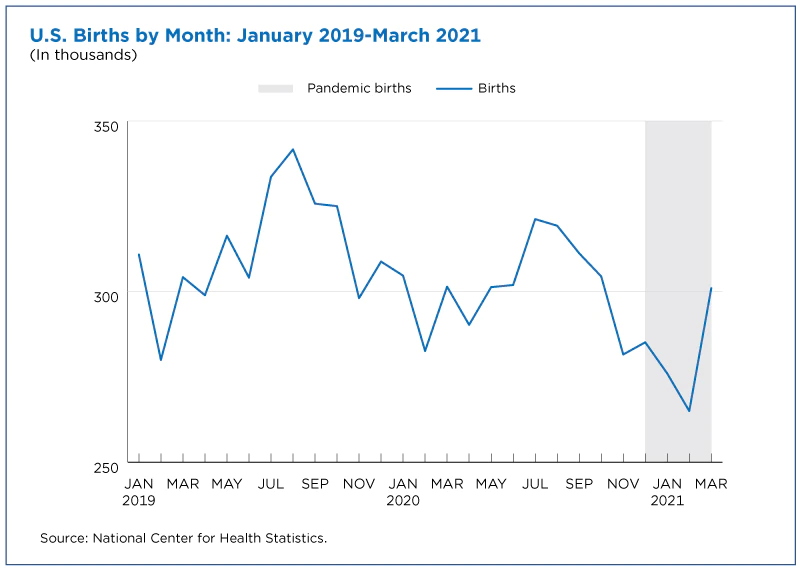Americans Are Having Fewer Babies — Is It Time for Statutory Paid Maternity Leave?

The United States has touted itself as the most economically viable, equitable, moral guardian on earth. Nevertheless, the United States is the only industrialized nation that does not mandate national paid maternal leave.
The U.S. has the distinction of being the only member of the Organisation for Economic Co-operation and Development (OECD), the influential Paris-based organization that recommends international standards of health and living, not to have paid maternity leave. As the leading financial contributer to OECD, the U.S. should be joining other member-countries that encourage social health by providing financial support to new mothers. This is not the case, however — at least not at present.
Currently, the United States has a federally mandated Family and Federal Leave Act (FMLA), which guarantees 12 weeks of unpaid, job-protection for new mothers. Yet according to the Pew Research Center, 82% of Americans support paid maternity leave. Such overwhelming support is informed by the harsh reality that nearly 25% of employed mothers in the U.S. go back to work within two weeks of childbirth for fear of losing income. This is in stark contrast to new parents in Sweden that have 16 months of paid parental leave, or even Zimbabwe, which provides 98 days of paid parental leave while being considered a developing country. Of course, some private U.S. employers may stipulate an agreement for paid leave in their employees' contracts. However, according to the Bureau of Labor Statistics, only about 19% of U.S workers have paid parental leave.
These poignant statistics may otherwise float listlessly within a metaphysical mist that is American ingenuity and bliss if it wasn't for the fact that the U.S. is currently going through a baby bust. According to monthly data from the U.S. Census Bureau, the number of U.S. births has declined every year since 2008, except for 2014. Moreover, between 2000 and 2019, daily births declined on average 0.39% each year. That pace accelerated from 2010 to 2019 to 0.96% per year. Even before the COVID-19 pandemic, 2020 was on pace to have fewer births each month than in 2019.
As a result, according to a Brookings analysis, "U.S. fertility rates are likely to be considerably below replacement levels for the foreseeable future." As such, the longer low birth rates are maintained, the harder it will be to reverse the population's decline.
The dip in birth rates can partially be attributed to women's changing role in society as equal rights initiatives continue to make an impact on gender employment disparities in the U.S. workforce. Additionally, more career-driven women than ever are planning to have children later in life in exchange for higher education and the possibility of ascending corporate ladders. However, there is an essential correlation between the declining birth rate and economic disadvantage created by workplaces that do not have parental leave.
If 82% of Americans want paid maternity leave, then the country's declining birth rate is likely the statistical manifestation of that overwhelming consensus. Other alternatives to reverse the U.S. birth rate decline would include stripping women of their reproductive rights, reversing their educational goals, and eliminating their freedom to work. However, those alternatives do not seem likely since women in the U.S do not live in the Republic of Gilead and most would not be interested in living in any society reminiscent of The Handmaid's Tale.
Reversing the birth rate decline requires a more practical approach that will encourage prospective parents to have children by making them feel financially secure. To act on this sentiment, President Biden has proposed the American Families Plan (AFP) to implement 12 weeks of partial pay to new parents in year 10 of the program. However, prospective parents would have to wait for benefits, effectively threatening to prolong the birth rate decline for another ten years. With its enormous debt and continuous tensions with China, America's economic investment in human capital and an educated workforce should not be weakened by an issue as simple as paid maternity leave.
Instead, families should be encouraged to strengthen the country's workforce in an increasingly competitive, globalized economy. Therefore, statutory paid maternity leave legislation should be independent of any other proposed bill, including the AFP, to directly address the wishes of the 82% of Americans who support it. Perhaps maternity leave policy should keep the AFP's suggestion of 12 weeks but pay at staggered amounts. For example, the policy could begin with payments at partial rates of 25% of monthly employment income. That could then be increased each year at 25% until year four when full pay would be guaranteed to all new mothers. Or, Americans could simply vote on the percentage of pay that they feel would be required to make them more secure about having children while employed. Regardless of percentages, paid maternity leave is hugely popular amongst Americans and it may be the most sufficient solution to the naiton's baby problem.










